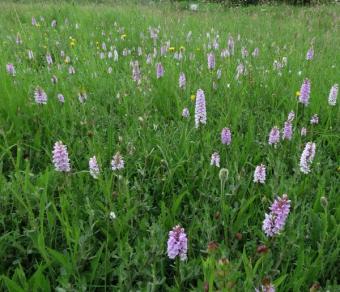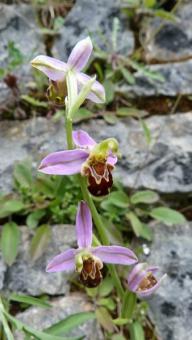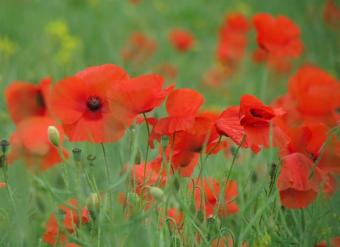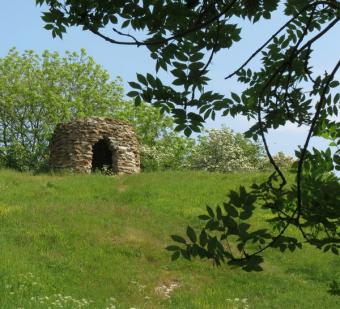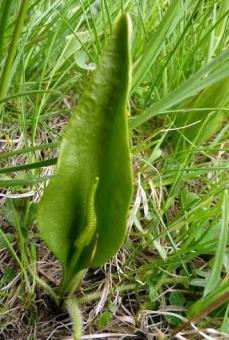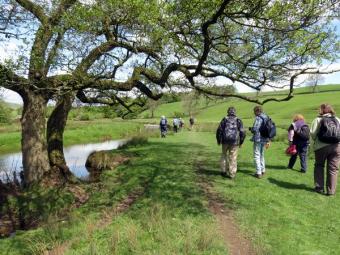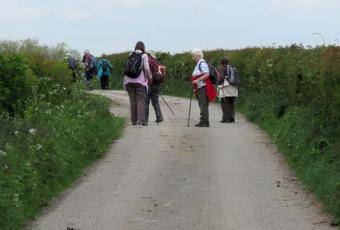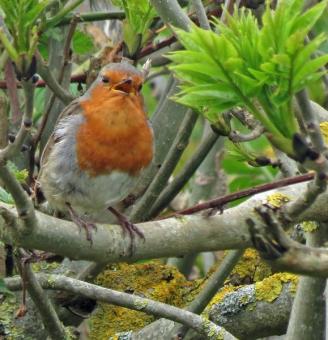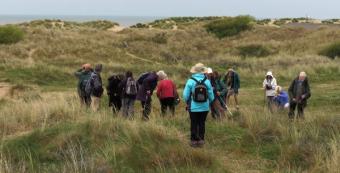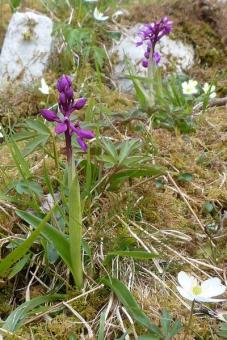WFV, Slaidburn and Stocks Reservoir, 5th July 2016
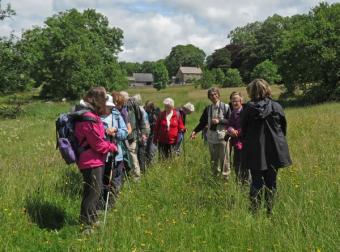 Leaving The FarmAfter various pick ups along the Aire Valley a full mini-bus headed towards the Forest of Bowland to visit the Bell Sykes Hay Meadows at Slaidburn. These are the most extensive traditional hay meadows in Lancashire.
Leaving The FarmAfter various pick ups along the Aire Valley a full mini-bus headed towards the Forest of Bowland to visit the Bell Sykes Hay Meadows at Slaidburn. These are the most extensive traditional hay meadows in Lancashire.
We were met at the car park (toilet stop) by Sarah Robinson (Bowland Hay Time Project Officer) and Peter Blackwell the tenant farmer of Bell Sykes Farm. We were led along a narrow path through the meadows during which Sarah explained the history of haymaking, from the last Ice age to the present day and the variety of grasses in the meadow. Rough Hawkbit and Eyebright were the predominant wildflowers. Other plants included Common Spotted Orchid, Great Burnet and Tufted Vetch.
It was a pleasant day weather wise, dry with plenty of sunshine, though cool in the stiff north-westerly breeze when the sun went behind a cloud. I now appeared to have recovered from my illness that prevented me attending two of the last 3 outings.
Those at the back of the line were fortunate to spot a Kingfisher by the bridge, I was further along so missed it. A Curlew was seen attacking a Buzzard. Ringlets and Meadow Brown butterflies were on the wing as was a solitary Large Skipper. A patch of Melancholy Thistles just before the farm was the star plant.
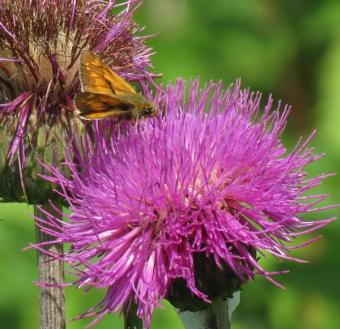 Large SkipperLunch was taken in a restored barn and our hosts kindly provided tea and coffees. We had a choice of hay bales or plastic seats, after which we then completed our 2 mile walk back to Slaidburn along the riverside path. There was little to interest the botanists on the return.
Large SkipperLunch was taken in a restored barn and our hosts kindly provided tea and coffees. We had a choice of hay bales or plastic seats, after which we then completed our 2 mile walk back to Slaidburn along the riverside path. There was little to interest the botanists on the return.
Our next stop was a ten minute (half hour!) visit to the churchyard near the reservoir. This was very good botanically; lots of Twayblades and Common Spotted Orchids. After that we made our way to Stocks Reservoir where we spent an hour, only going so far as the first bird-hide. Birds seen = Cormorants, Greylags, Canadas, Lapwing and Lesser Black-Backed Gulls.
A solitary Southern Marsh Orchid was found in a picnic area along with my first Small Skipper of the year and a Common Blue butterfly. Moths seen were Silver-ground Carpet and Straw Dot. Not a single dragon or damselfly to be seen! Probably too windy.
A total of 80+ plants were recorded by Joan and Alice.
Many thanks to our hosts and Julia for her driving.
See the photos here.
John Gavaghan

